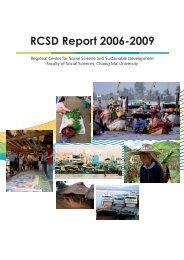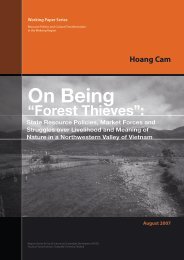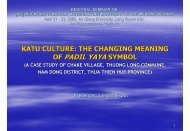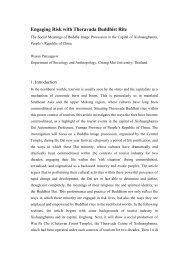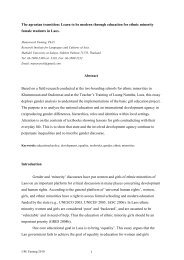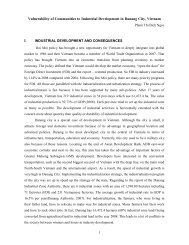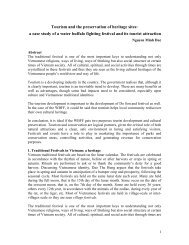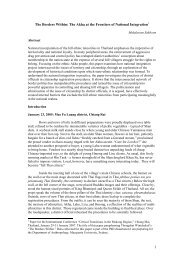Transformation after two decades of agrarian reform ... - RCSD
Transformation after two decades of agrarian reform ... - RCSD
Transformation after two decades of agrarian reform ... - RCSD
Create successful ePaper yourself
Turn your PDF publications into a flip-book with our unique Google optimized e-Paper software.
claims to the land; 2) a functioning Municipal Agrarian Reform Office (MARO), which is themain implementer <strong>of</strong> the CARP in the local communities, 3) the entry <strong>of</strong> local and foreignnongovernmental organizations (NGOs), civil society and other <strong>agrarian</strong>/rural <strong>reform</strong> advocategroups that assist the farmers/tenants in their fight for their lands, and 4) the overt and covertinitiatives practiced by the farmers at the individual level to oppose the existing large landowners in the area. On the other hand, there are also factors that stall the success <strong>of</strong> the <strong>agrarian</strong><strong>reform</strong> program in Buenavista: 1) the continuing influx <strong>of</strong> migrants, mostly landless farmers,from the Bicol region, who eventually become dependent on land owning entities; 2) the new“propaganda” and tactics used by these landlords to halt the CARP program like conversion <strong>of</strong>their remaining landholdings into non-agricultural lands and re-buying back lands from theCARP beneficiaries; and 3) CARP grantees who re-sell or pawn their lands to their formerlandlords.Agrarian Reform and the PeasantsThe remaining hacienda <strong>of</strong> the Reyeses in Buenavista has about 155 tenants, subject to the 70-30crop sharing system (locally known as tersyohan), in favor <strong>of</strong> the landlord. Among these tenantsare caretakers or overseers cum ‘estate managers’, locally known as enkargados, <strong>of</strong> the coconutplantations. They are the most trusted men <strong>of</strong> the landowner. The landowners do not directlynegotiate with their tenants but through these enkargados. This implies a hierarchy within thetenants: the caretakers/overseers/managers/enkargados above the ordinary tenants who workdirectly on the land.Prior to the <strong>agrarian</strong> <strong>reform</strong>, harvests <strong>of</strong> the tenants are turned over to the enkargados who, inturn, would oversee the processing <strong>of</strong> the nuts into copra. Ordinarily, the same tenants whoharvested the nuts would transport the nuts to the drying area, de-husk and cook (throughsmoking) the nuts to become copra. The enkargado would then sell the copra to coconut buyers,usually, in the capital town <strong>of</strong> Quezon, Province. The pr<strong>of</strong>it from this would be divided betweenthe landlord who gets 70% <strong>of</strong> the share and the enkargado who gets the remaining share. Theenkargado, in turn, ‘pays’ the tenants at a rate <strong>of</strong> P10 per kilo <strong>of</strong> copra that were produced, withadditional payments for their extra labor. However, during the land redistribution program, thisReyeses started to engage the services <strong>of</strong> non-tenants who are willing to work as farm workers in9




